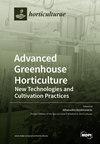Continuous Plant-Based and Remote Sensing for Determination of Fruit Tree Water Status
IF 3.1
3区 农林科学
Q1 HORTICULTURE
引用次数: 0
Abstract
Climate change poses significant challenges to agricultural productivity, making the efficient management of water resources essential for sustainable crop production. The assessment of plant water status is crucial for understanding plant physiological responses to water stress and optimizing water management practices in agriculture. Proximal and remote sensing techniques have emerged as powerful tools for the non-destructive, efficient, and spatially extensive monitoring of plant water status. This review aims to examine the recent advancements in proximal and remote sensing methodologies utilized for assessing the water status, consumption, and irrigation needs of fruit tree crops. Several proximal sensing tools have proved useful in the continuous estimation of tree water status but have strong limitations in terms of spatial variability. On the contrary, remote sensing technologies, although less precise in terms of water status estimates, can easily cover from medium to large areas with drone or satellite images. The integration of proximal and remote sensing would definitely improve plant water status assessment, resulting in higher accuracy by integrating temporal and spatial scales. This paper consists of three parts: the first part covers current plant-based proximal sensing tools, the second part covers remote sensing techniques, and the third part includes an update on the on the combined use of the two methodologies.基于植物和遥感技术的果树水分状况连续测定技术
气候变化给农业生产带来了巨大挑战,因此有效管理水资源对作物的可持续生产至关重要。评估植物水分状况对于了解植物对水分胁迫的生理反应和优化农业用水管理措施至关重要。近地和遥感技术已成为非破坏性、高效和空间广泛监测植物水分状况的有力工具。本综述旨在研究近期在果树作物水分状况、消耗和灌溉需求评估中使用的近距离传感和遥感方法的最新进展。事实证明,几种近距离传感工具在连续估算果树水分状况方面非常有用,但在空间变异性方面有很大的局限性。相反,遥感技术虽然在估计水分状况方面不够精确,但可以通过无人机或卫星图像轻松覆盖中到大面积区域。近距离和遥感技术的结合必将改善植物水分状况评估,通过整合时间和空间尺度提高评估精度。本文由三部分组成:第一部分涉及当前基于植物的近距离传感工具,第二部分涉及遥感技术,第三部分包括两种方法结合使用的最新情况。
本文章由计算机程序翻译,如有差异,请以英文原文为准。
求助全文
约1分钟内获得全文
求助全文

 求助内容:
求助内容: 应助结果提醒方式:
应助结果提醒方式:


